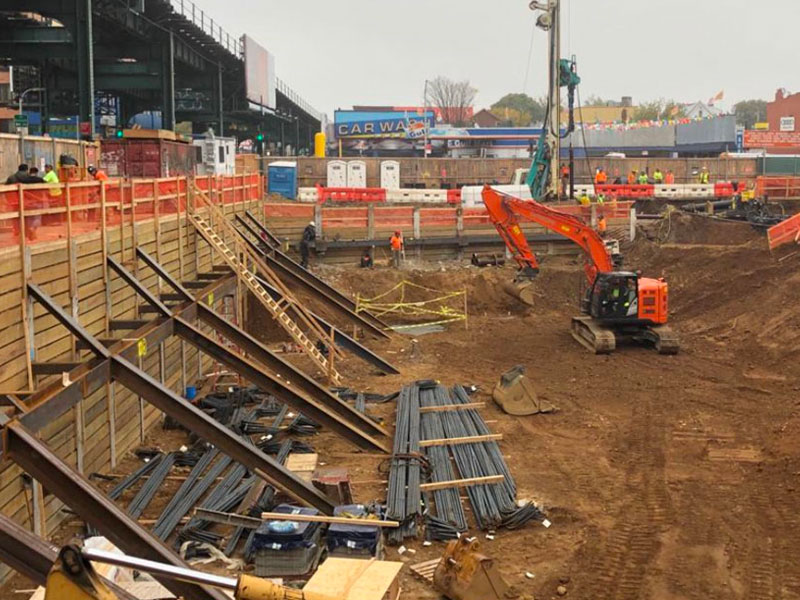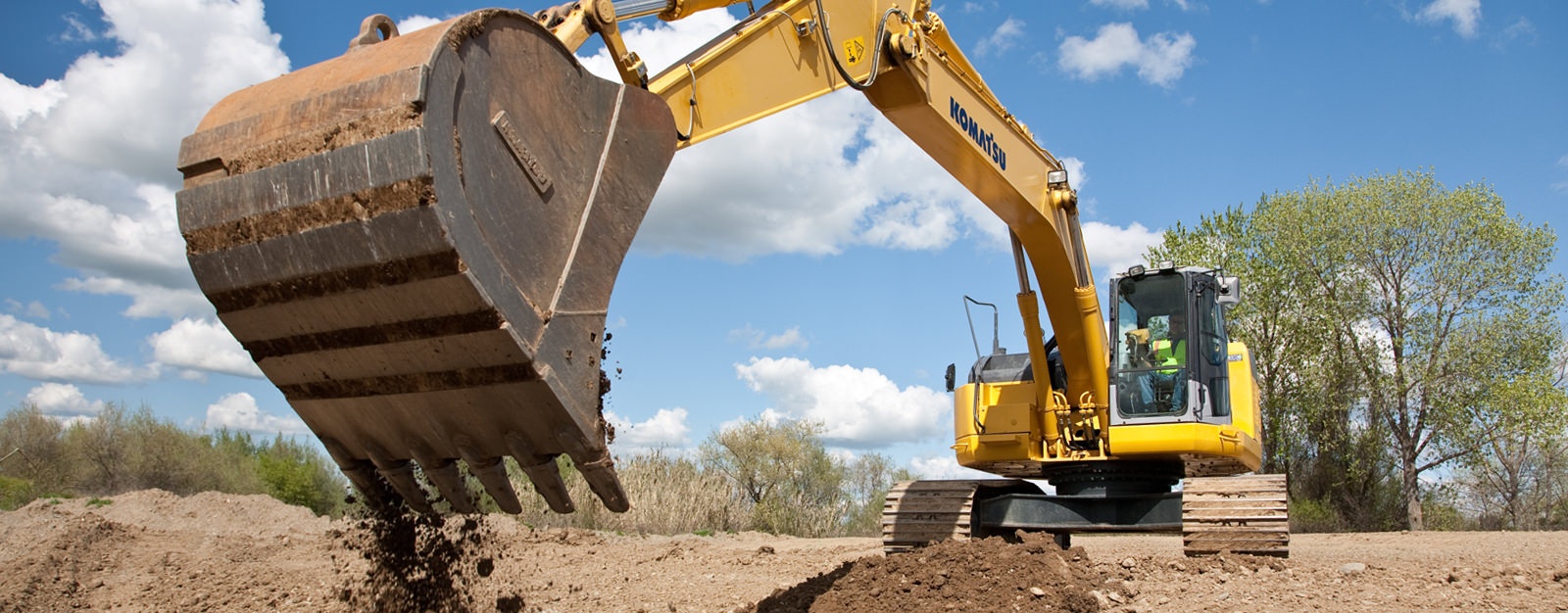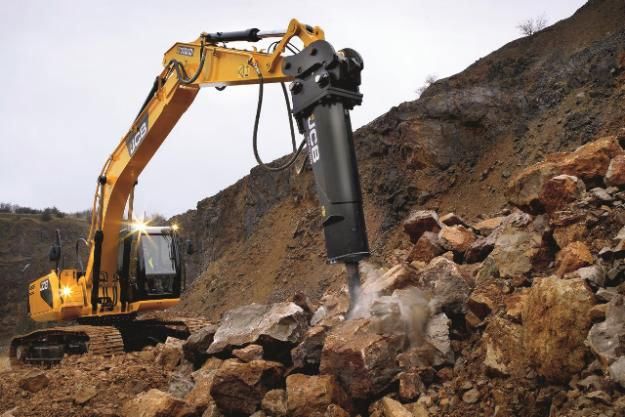Septic Ohio - Comprehensive Septic Tank Solutions in Ohio
Septic Ohio - Comprehensive Septic Tank Solutions in Ohio
Blog Article
Extensive Expedition: The Scientific Research Behind Superior Excavation Practices
The world of excavation practices is a domain name where scientific research intertwines with craftsmanship to uncover the enigmas concealed beneath the planet's surface. From old hand tools to modern-day hydraulic excavators, the development of excavation strategies has been a testimony to human resourcefulness and technological innovations. Nevertheless, what absolutely sets exceptional excavation methods apart is a deep understanding of geological concepts, coupled with the use of cutting-edge tools and approaches. By exploring the scientific research behind these methods, we can reveal the tricks that lie below our feet and value the precision and knowledge that go right into every dig.
Advancement of Excavation Methods
Throughout background, the evolution of excavation strategies has played an important function in progressing construction techniques and archaeological explorations. From the basic devices utilized by our ancestors to the advanced equipment employed in modern-day times, the development of excavation methods has significantly transformed exactly how we approach various jobs.
In old times, manual work with basic devices such as wheelbarrows, shovels, and pickaxes was the main method of excavation. This labor-intensive procedure limited the deepness and range of excavations, often leading to slow progression and limited accessibility to particular sites. Nevertheless, as human beings progressed, so did the methods and tools utilized for excavation.
The Industrial Revolution noted a turning factor in excavation practices with the intro of steam-powered machinery. This development changed the field, permitting for faster and more extensive excavations. In modern times, technology plays a crucial role in excavation, with advancements like general practitioner systems, drones, and 3D scanning boosting precision and effectiveness in the field. The evolution of excavation techniques continues to form the way we construct, explore, and recognize the world around us.
Function of Technology in Excavation

The combination of sophisticated innovation has essentially revolutionized the area of excavation, improving precision and performance to extraordinary degrees - lancaster trenching. One of the vital technological improvements that has dramatically affected excavation techniques is the utilization of GPS systems.
In addition, the arrival of 3D modeling and simulation software has structured the planning process for excavation jobs. Designers and drivers can currently visualize the whole excavation process prior to beginning, determining possible difficulties and optimizing process. Combined with this, the implementation of drones in excavation tasks has actually facilitated airborne studies, volumetric measurements, and website examinations with unmatched speed and accuracy.
Geological Principles in Excavation
An understanding of geological concepts is necessary for ensuring the structural integrity and security of excavation sites. Geological factors play an essential role in figuring out the usefulness and security of excavation projects (lancaster trenching). One vital geological principle to think excavating ohio about is the kind of dirt or rock existing at the site. Different soil types, such as sand, clay, or crushed rock, have differing levels of security and require various excavation techniques. Cohesive soils like clay might need additional assistance to avoid collapses, while sandy dirts might be vulnerable to erosion throughout excavation.
By performing detailed geological surveys and evaluation, excavators and engineers can create approaches to minimize dangers and ensure the successful conclusion of excavation tasks. Ultimately, including geological concepts into excavation methods is critical for achieving risk-free, reliable, and sustainable results.

Newest Devices for Excavation
In the world of excavation practices, contemporary technologies in devices have actually revolutionized the performance and accuracy of excavation processes. These drones can provide comprehensive aerial studies of excavation sites, using real-time data on topography and prospective dangers.
One more cutting-edge device getting appeal is the application of 3D printing technology for producing personalized excavation tools. This enables the manufacturing of specialized devices that are tailored to the details requirements of a project, enhancing effectiveness and reducing downtime.
In addition, innovations in products scientific research have actually led to the development of stronger and a lot more sturdy excavation devices. lancaster trenching. Tungsten carbide-tipped excavator add-ons, for instance, offer superior performance in challenging ground problems, improving efficiency on-site
Scientific research's Influence on Excavation Practices

Moreover, improvements in materials scientific research have actually resulted in the try these out creation of more powerful, much more sturdy excavation devices and equipment. The use of composite products in shovels and diggers has boosted their efficiency and longevity, inevitably enhancing productivity on excavation websites. Additionally, clinical research on dirt auto mechanics and geotechnical design has actually provided beneficial insights into soil actions, permitting excavation specialists to make educated decisions pertaining to excavation techniques and dirt stabilization methods. In general, science continues to drive innovation and renovation in excavation methods, over here making excavation projects extra effective, cost-efficient, and lasting.

Conclusion
In conclusion, the evolution of excavation strategies has actually been considerably influenced by advancements in modern technology and a much deeper understanding of geological principles. The latest devices and tools made use of in excavation have actually improved efficiency and accuracy in the field. The application of scientific expertise has considerably enhanced excavation techniques, causing much more sustainable and effective approaches for excavating numerous sorts of materials.
In the realm of excavation methods, contemporary developments in tools have actually changed the performance and accuracy of excavation procedures. By leveraging scientific principles, the excavation sector has actually been able to substantially enhance effectiveness, accuracy, and safety and security in excavation procedures. GPR enables excavation groups to non-invasively scan and map subsurface frameworks, energies, and possible dangers, enabling them to plan excavation tasks with better precision and decreased risk of accidents.
In addition, clinical research study on soil mechanics and geotechnical design has actually provided important insights into dirt habits, enabling excavation experts to make informed choices relating to excavation techniques and dirt stablizing techniques. Overall, scientific research proceeds to drive development and improvement in excavation techniques, making excavation tasks much more efficient, cost-effective, and lasting.
Report this page